Real eState
Will COVID-19 affect the spring real estate market? – CBC.ca

Unlike the stock market, COVID-19 hasn’t affected the Lower Mainland real estate market — at least, not in a negative way.
A friend of mine just closed on an apartment for $500,000 where she had to deal with a bidding war and ended up paying over asking. Open houses are still well-attended and quality properties are being snapped up quickly. Even detached homes at higher price points are starting to move.
Low supply and high demand have pushed up prices — particularly in the case of condos which are selling at all-time highs.
To cushion the economic blow caused by COVID-19, central banks around the world have cut interest rates. Anyone with an existing variable mortgage, or someone looking to get one, can expect their borrowing costs to decrease. The Bank of Canada cut rates by a full percentage point since the beginning of March.
We are also seeing investors flee the stock market and park their money in investment grade bonds. A result of this flight to safety is that fixed-term mortgage rates are dropping. Lower mortgage rates increase the amount a home buyer can borrow, which pushes up prices as borrowers are able to make higher offers.
We also cannot forget about the mortgage stress test. Recently the hurdle rate of the stress test was lowered, allowing many buyers to re-enter the housing market. There was a lot of pent-up demand forced to the sidelines due to the stress test, which is now released on a market with limited inventory.
Buyers beware
All these factors are fuelling the housing market and not even COVID-19 appears to be able to slow it down — yet.
It was just a month ago when stock markets were at an all-time high, largely due to the fear of missing out, whereas today it’s the opposite: many people are panic selling.
The same could happen, but to a lesser degree, with real estate, as buying psychology is fickle.
It’s important to also keep in mind that, since all financial markets are interconnected, a stock market drop should affect the housing market. For example, many new buyers turn to the bank of mom and dad to help with their down payment. However, after experiencing a drop in their investment portfolio many parents will be less inclined, or no longer able, to help their children fund a down payment.
Another important factor to consider is the potential loss of income that COVID-19 may cause. Some lenders might be hesitant to lend to applicants working in areas affected by the pandemic such as the travel or oil and gas industries.
Selling? List properties right away
All these variables can affect demand.
If I were a buyer, I would be cautious. Don’t underestimate COVID-19’s negative impacts on the economy, jobs and buyers’ sentiment and avoid overstretching your budget — something that tends to happen when buying in a seller’s market.
My advice to sellers who are looking to cash out or downsize is to list their properties right away. Momentum is on your side and there is limited inventory, so sellers of quality homes are getting top dollar. The demand is currently high, but I wouldn’t be complacent and assume that it will last. If offered a reasonable price, I would take it.
If you don’t need to sell, I wouldn’t and I’m not. I still think housing in B.C. is a great long-term investment.
If you have a COVID-19-related story we should pursue that affects British Columbians, please email us at impact@cbc.ca
Real eState
Judge Approves $418 Million Settlement That Will Change Real Estate Commissions
|
|


A settlement that will rewrite the way many real estate agents are paid in the United States has received preliminary approval from a federal judge.
On Tuesday morning, Judge Stephen R. Bough, a United States district judge, signed off on an agreement between the National Association of Realtors and home sellers who sued the real estate trade group over its longstanding rules on commissions to agents that they say forced them to pay excessive fees.
The agreement is still subject to a hearing for final court approval, which is expected to be held on Nov. 22. But that hearing is largely a formality, and Judge Bough’s action in U.S. District Court for the Western District of Missouri now paves the way for N.A.R. to begin implementing the sweeping rule changes required by the deal. The changes will likely go into full effect among brokerages across the country by Sept. 16.
N.A.R., in a statement from spokesman Mantill Williams, welcomed the settlement’s preliminary approval.
“It has always been N.A.R.’s goal to resolve this litigation in a way that preserves consumer choice and protects our members to the greatest extent possible,” he said in an email. “There are strong grounds for the court to approve this settlement because it is in the best interests of all parties and class members.”
N.A.R. reached the agreement in March to settle the lawsuit, and a series of similar claims, by making the changes and paying $418 million in damages. Months earlier, in October, a jury had reached a verdict that would have required the organization to pay at least $1.8 billion in damages, agreeing with homeowners who argued that N.A.R.’s rules on agent commissions forced them to pay excessive fees when they sold their property.
The group, which is based in Chicago and has 1.5 million members, has wielded immense influence over the real estate industry for more than a century. But home sellers in Missouri, whose lawsuit against N.A.R. and several brokerages was followed by multiple copycat claims, successfully argued that the group’s rule that a seller’s agent must make an offer of commission to a buyer’s agent led to inflated fees, and that another rule requiring agents to list homes on databases controlled by N.A.R. affiliates stifled competition.
By mandating that commission be split between agents for the seller and buyer, N.A.R., and brokerages who required their agents to be members of N.A.R., violated antitrust laws, according to the lawsuits. Such rules led to an industrywide standard commission that hovers near 6 percent, the lawsuits said. Now, agents will be essentially blocked from making those commission offers, a shift that will, some industry analysts say, lower commissions across the board and eventually force down home prices as a result.
Real estate agents are bracing for pain.
“We are concerned for buyers and potentially how we will get paid for working with buyers moving forward,” said Karen Pagel Guerndt, a Realtor in Duluth, Minn. “There’s a lot of ambiguity.”
The preliminary approval of the settlement comes as the Justice Department reopens its own investigation into the trade group. Earlier this month, the U.S. Court of Appeals for the District of Columbia overturned a lower-court ruling from 2023 that had quashed the Justice Department’s request for information from N.A.R. about broker commissions and how real estate listings are marketed. They now have the green light to scrutinize those fees and other N.A.R. rules that have long confounded consumers.
“This is the first step in bringing about the long awaited change,” said Michael Ketchmark, the lawyer who represented the home sellers in the main lawsuit. “Later this summer, N.A.R. will begin changing the way that homes are bought and sold in our country and this will eventually lead to billions of dollars and savings for homeowners.”
Under the settlement, homeowners who sold homes in the last seven years could be eligible for a small piece of a consolidated class-action payout. Depending on how many homeowners file claims by the deadline of May 9, 2025, that could mean tens of millions of Americans.





Real eState
Two matching megacomplexes to totally transform Toronto neighbourhood
|
|
A pair of twinned proposals aim to completely redefine the skyline of Toronto’s midtown area with an architectural statement that would set the neighbourhood apart from other high-rise clusters in the city.
Two separate proposals from developer Madison Group at 110 and 150 Eglinton Avenue East have been resubmitted to city planners, calling for two pairs of mixed-use condominium towers with standout designs unlike anything that exists in the city today.
In a surprising twist from a developer not exactly known for breaking the bank on architecture, the proposals now boast brand-new complementary designs from acclaimed firm Rafael Viñoly Architects.
The 110 Eglinton site, currently home to a pair of mid-rise office buildings, would be demolished and built out with two 58-storey towers.
A few doors to the east, the 150 Eglinton site includes a handful of mid-rise and low-rise commercial buildings along Eglinton, wrapping around Redpath Avenue. These buildings would also be demolished and replaced with a pair of 61-storey towers.
All four towers will feature matching designs boasting red aluminum cladding forming vertical piers that accentuate the towers’ heights, though there will be some key differences between the pairs at 110 and 150 Eglinton.
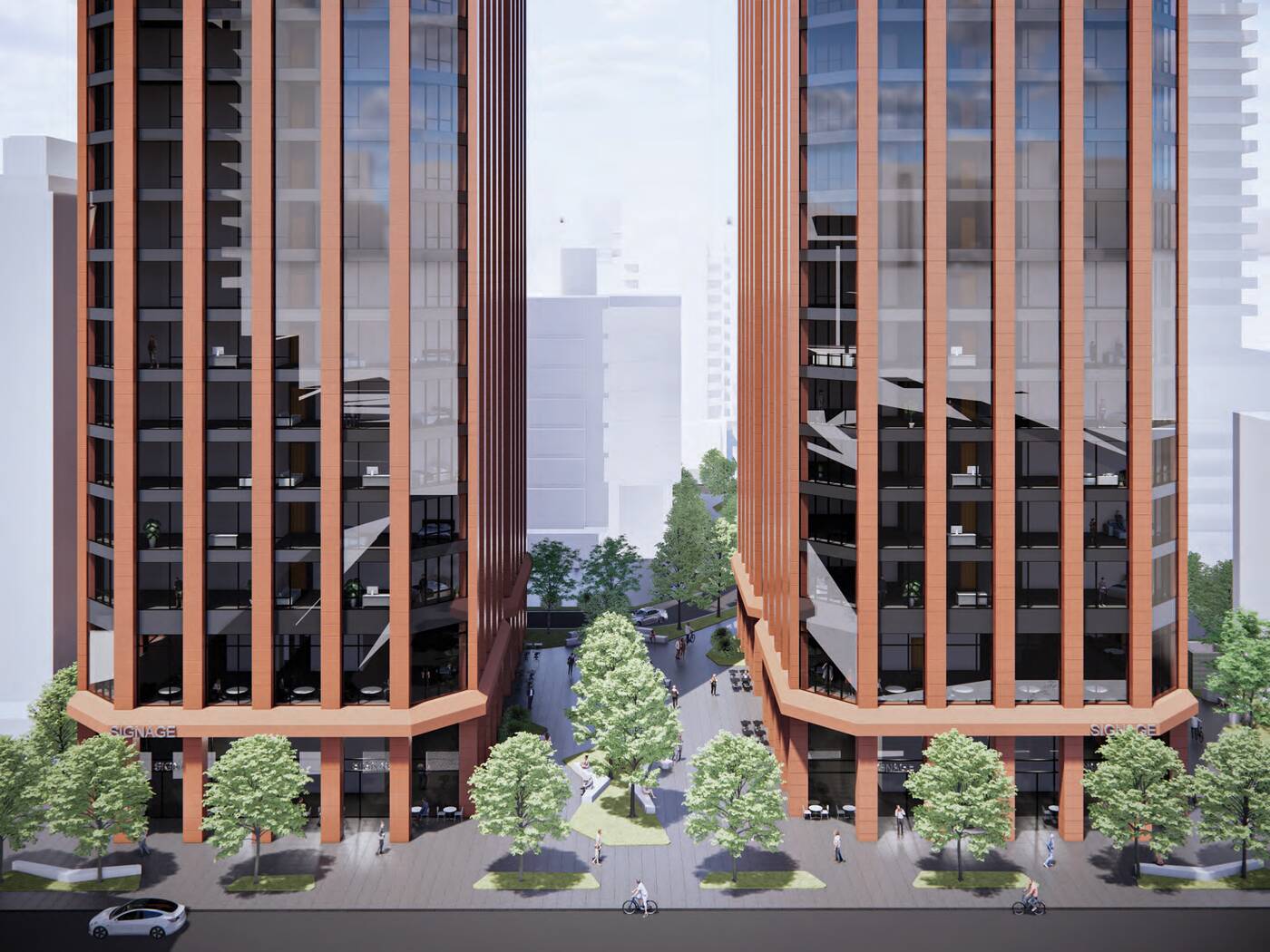

150 Eglinton East
The 58-storey towers at 110 Eglinton East will be linked via an enormous floating bridge spanning levels five through 10, framing a large open public space below and supporting an elevated residential amenity floor above.
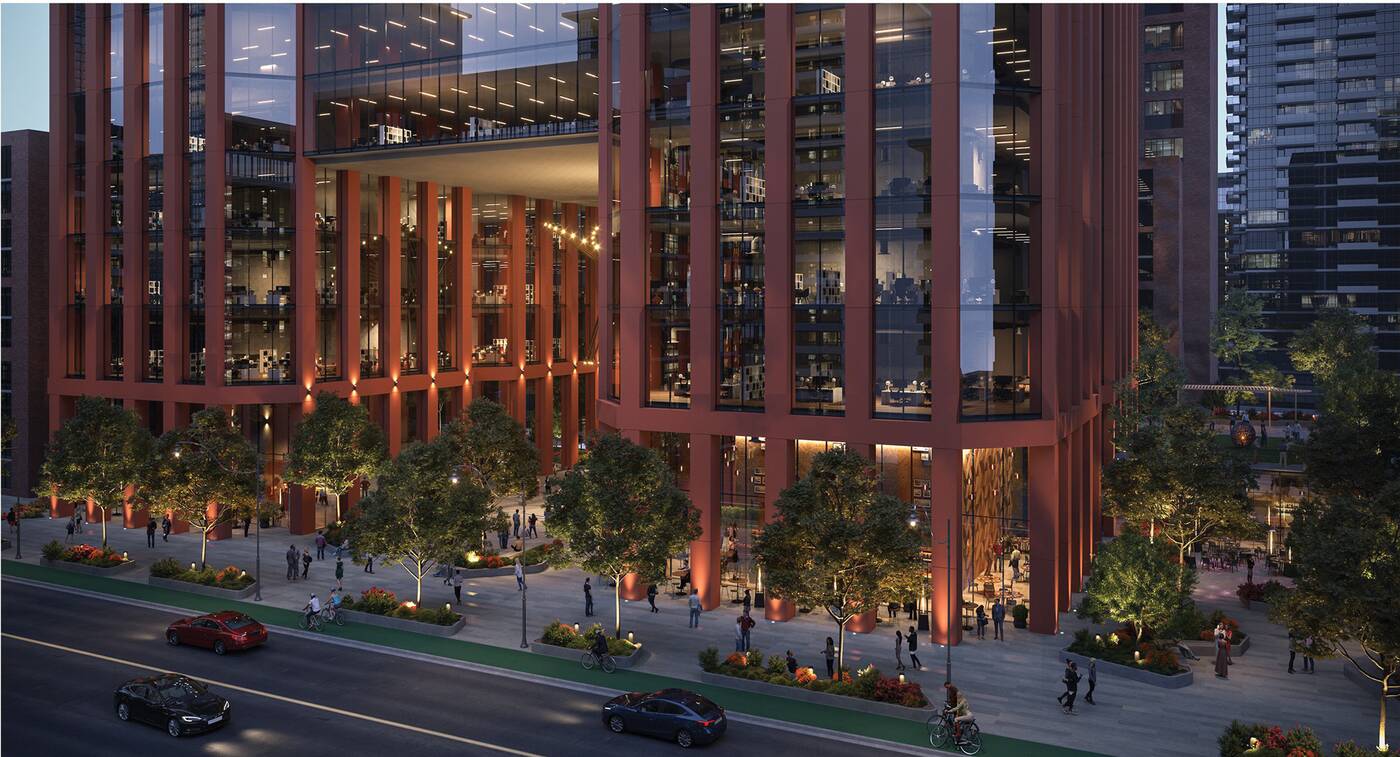

The 61-storey towers lack a skybridge, but will also feature amenity levels with panoramic views, including spaces on the 28th and 40th floors.
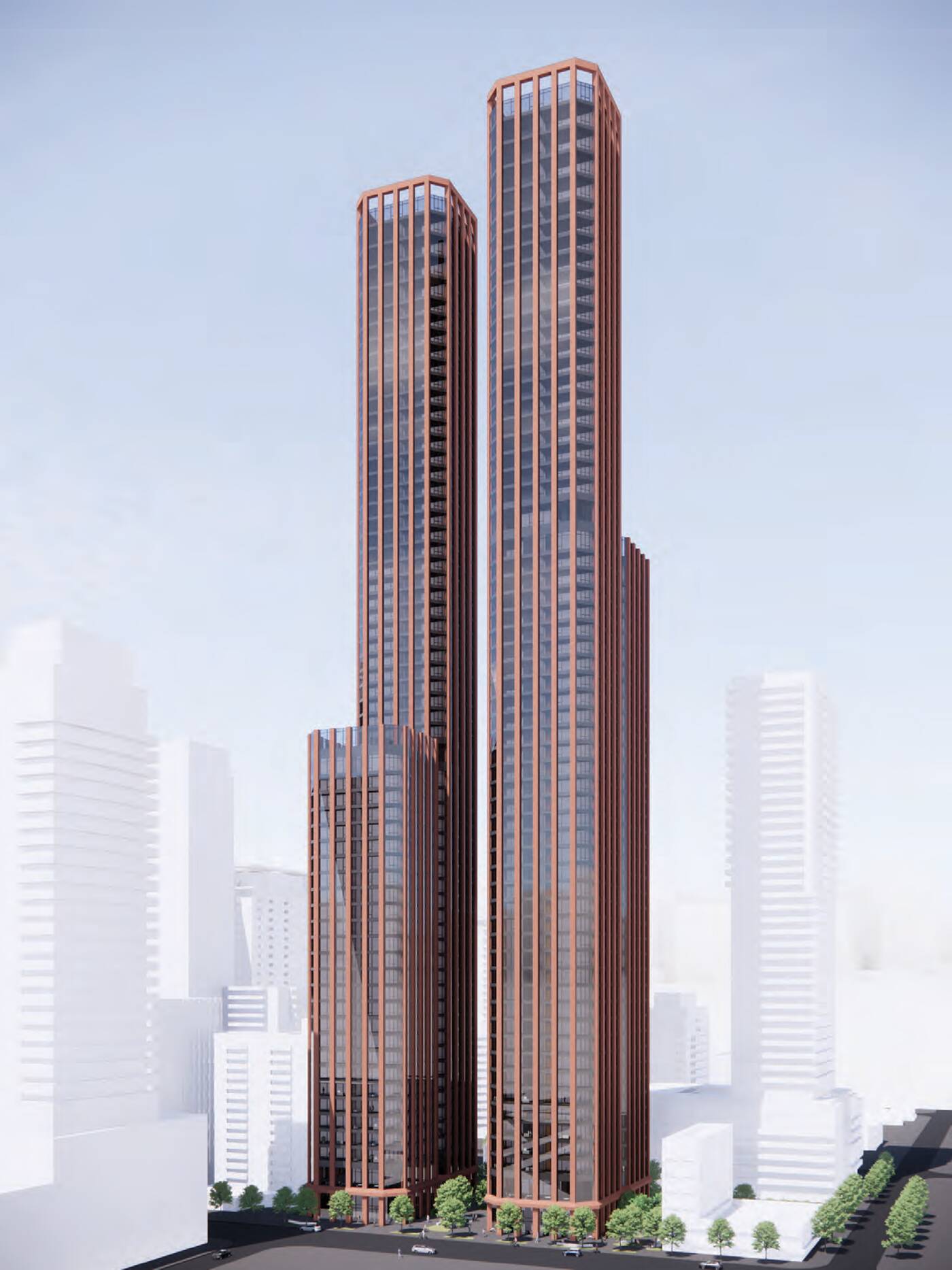

At heights of just over 236 metres, these four towers all stand taller than anything that exists in the neighbourhood as of 2024.
The combined proposals would add a staggering 3,364 condominium units to the neighbourhood, along with new retail and office space to maintain employment uses along this evolving corridor.
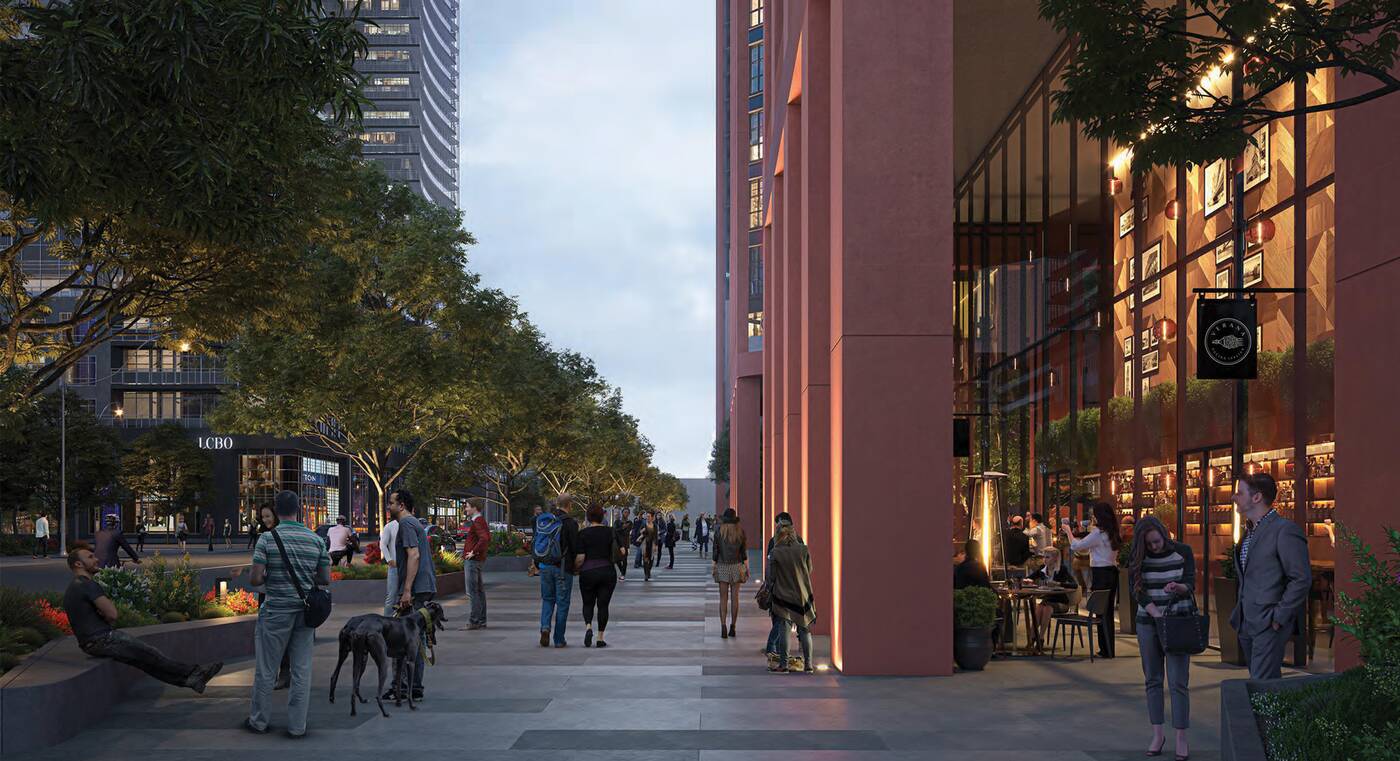

One standout of the proposals is a series of privately-owned publicly accessible spaces measuring over 5,000 square metres across the combined sites.


Among the publicly-accessible spaces proposed are the aforementioned area below the bridge at 110 Eglinton, along with pedestrian walkways that will allow foot traffic to filter through the block between Eglinton and Roehampton Avenue to the north.


It’s the type of proposal one would expect to be met with significant local backlash. However, early feedback from the neighbourhood is surprisingly positive.
Local city councillor Josh Matlow took to X to voice his support for the project, calling it “genuinely exciting.”
“The architecture is beautifully designed,” said Matlow, hyping up locals with a promise that renderings of the new public space would wow the community. It’s remarkable for our community and city — like bringing Rockefeller Center to midtown Toronto,” said Matlow.





Real eState
This Toronto home is a ’90s decor trip but a steal at only $600K
|
|
If you’re a millennial and grew up in the ’90s, you’ll probably remember a fair amount of ’90s home decor trends that might still haunt you to this day.
There were sponge-painted walls, all-beige everything, wallpaper borders, oak cabinets, carpets in places where there shouldn’t be carpets, bedroom sets from big-box stores, Southwestern or Tuscan decor in homes that weren’t in Arizona or Italy, and the list goes on.
We thought we’d left those troubling times in the past, but 39 Hatherley Rd. really brings back all those memories.
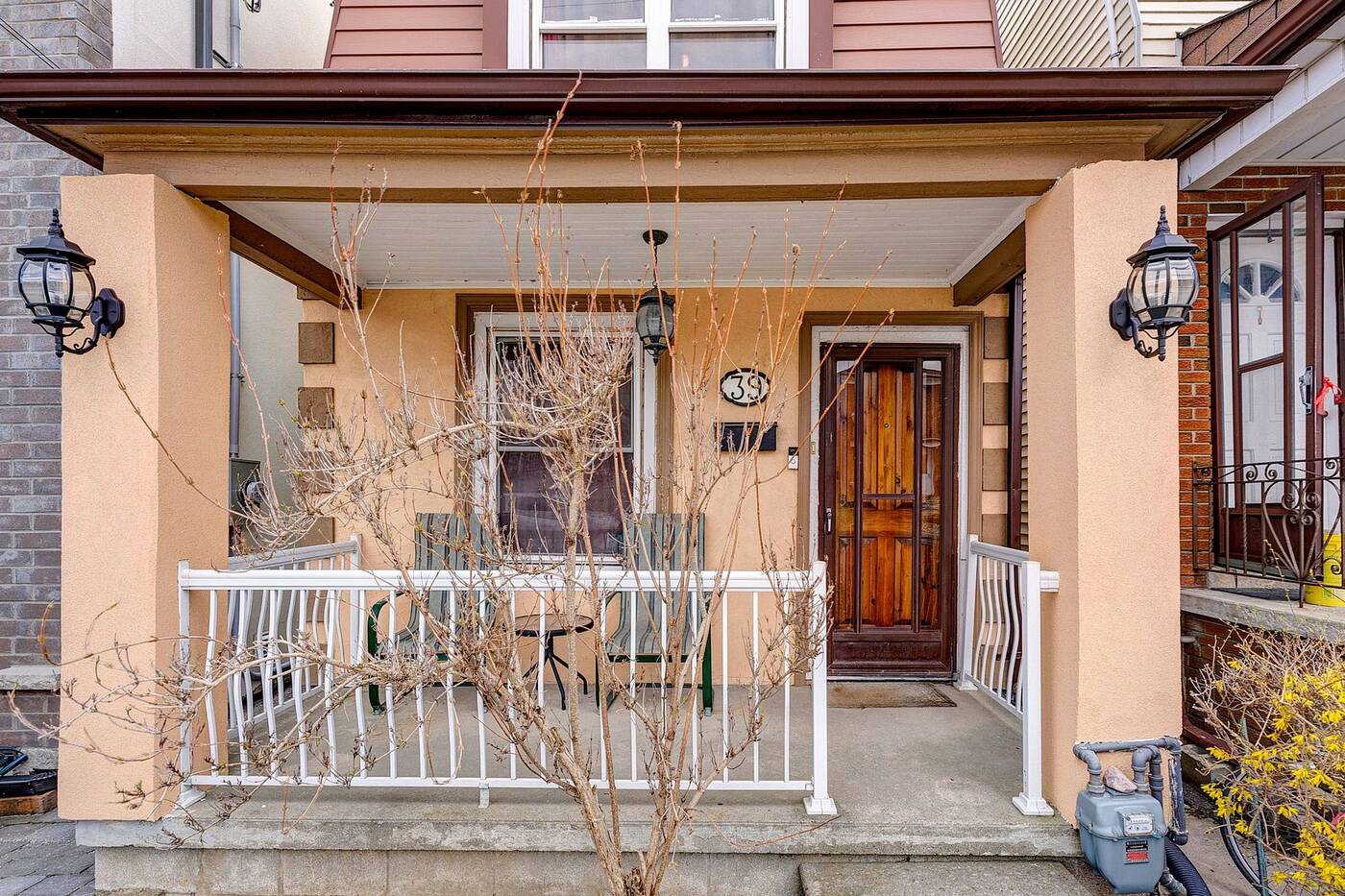

The front porch.
Somehow this two-bedroom, one-bathroom house hit almost every ’90s trend, except for carpets in the bathroom (phew!).
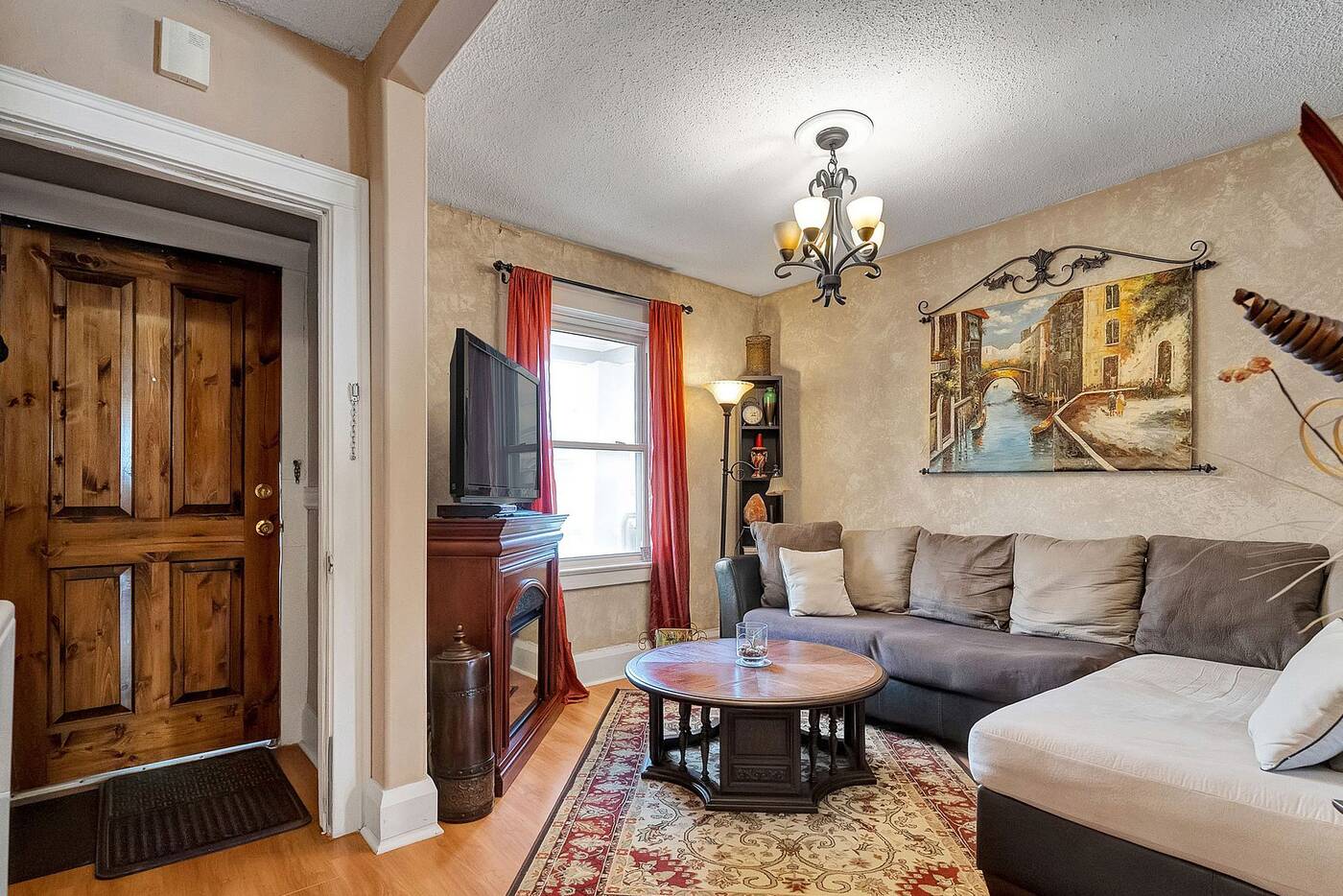

The entryway.
What’s weird is this house has changed ownership a few times since the 90s. In fact, it was most recently purchased in 2010 for $250,000.
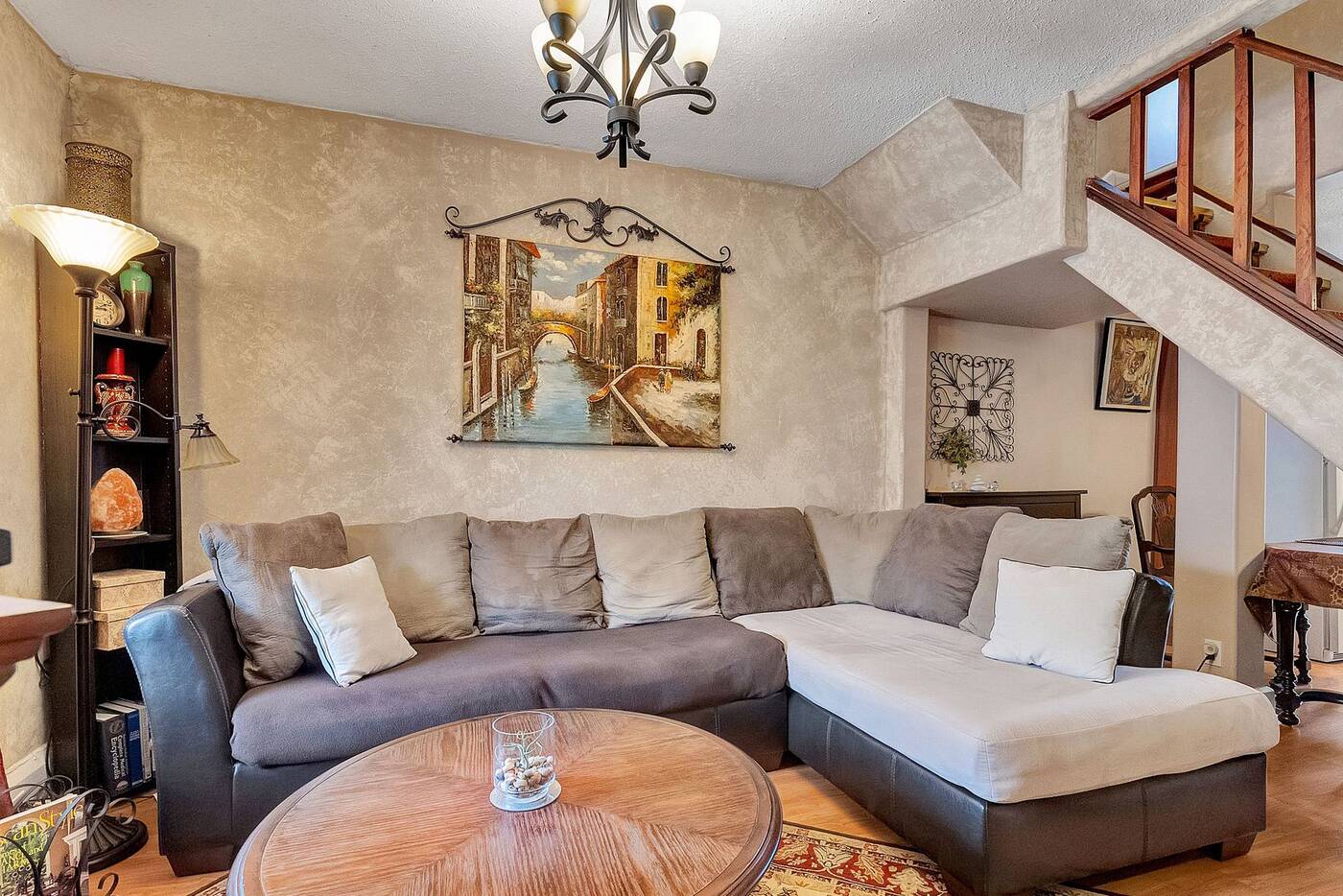

The living room.
So it’s somewhat surprising that when you look at past listing photos, almost nothing has changed. In fact, it seems they added the sponge-painted walls in 2010.
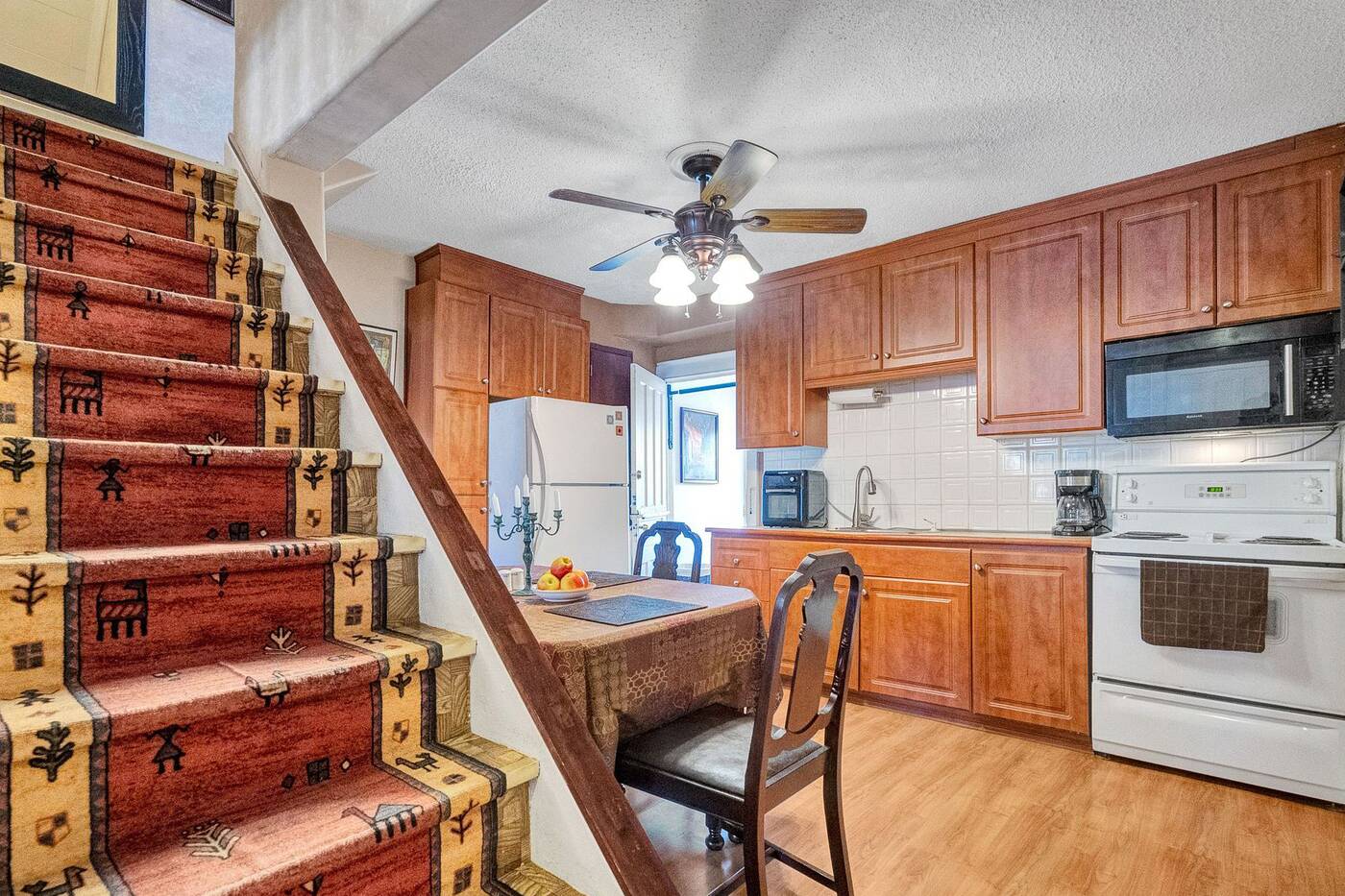

The kitchen.
But despite 39 Hartherley Rd. being a total throwback, this house is, as the listing says, “a diamond in the rough.”
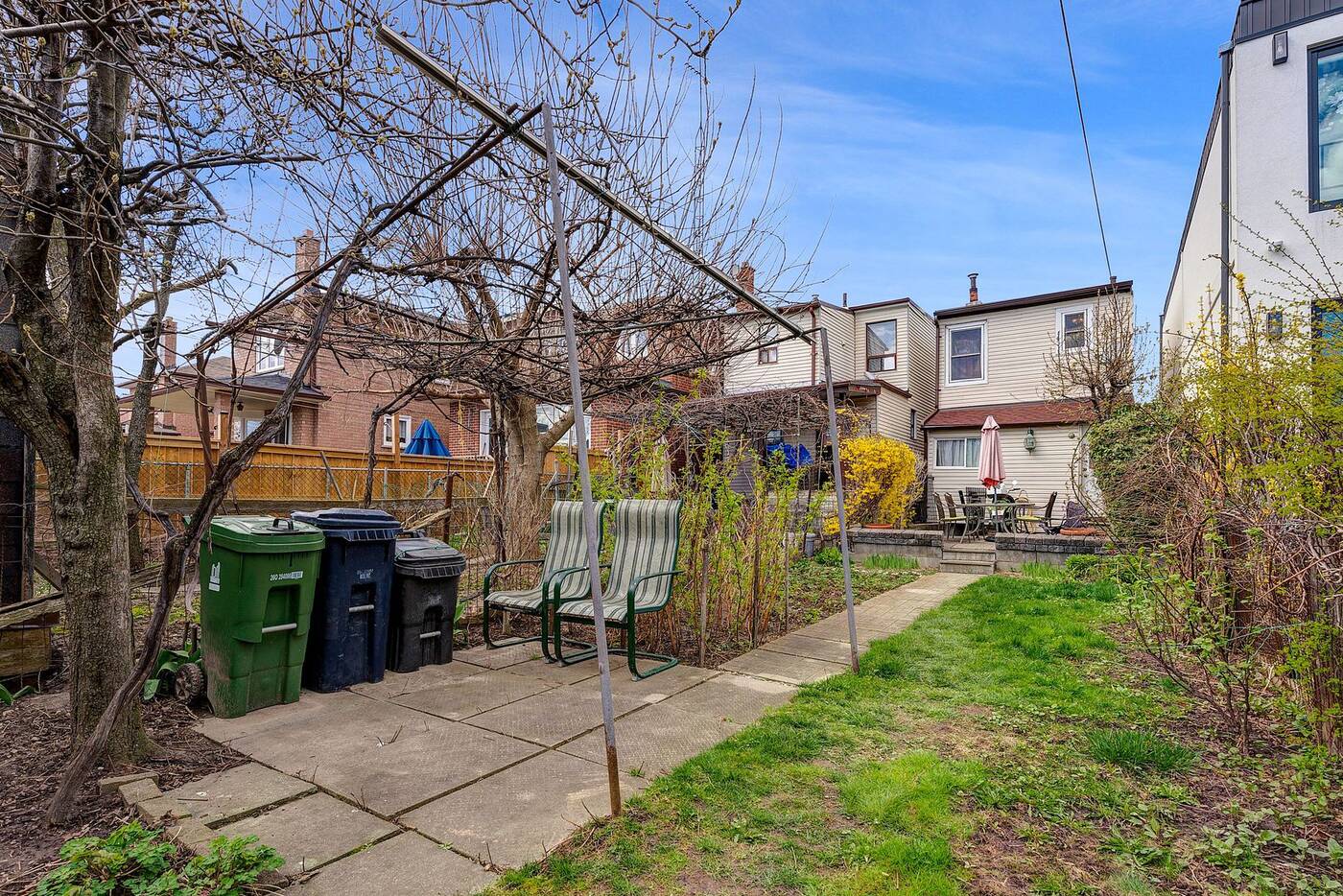

The backyard.
First off, it’s a detached house with a 125-foot deep lot in a good location.
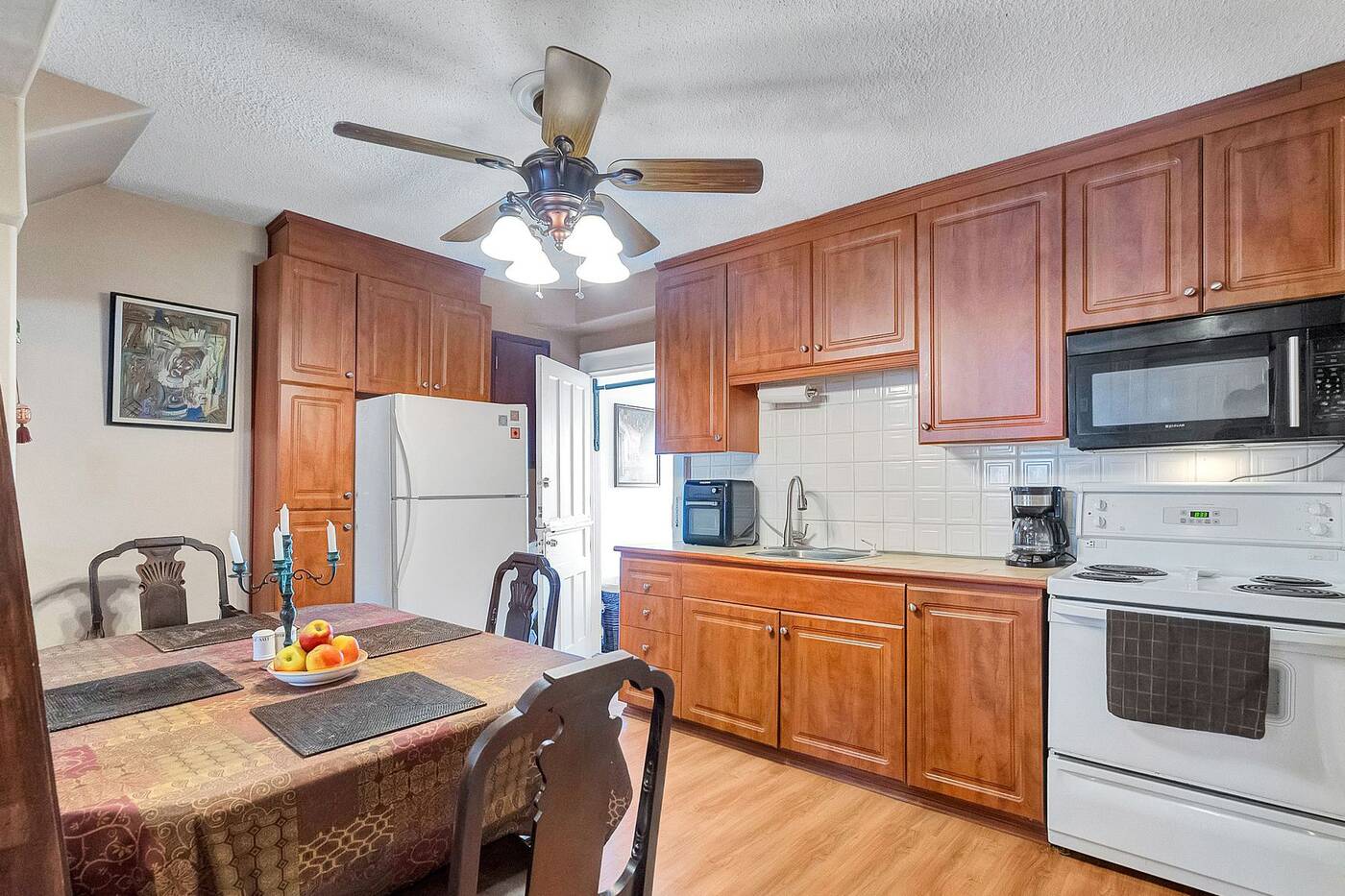

The kitchen has plenty of storage but, sadly, no dishwasher.
The main floor has a living room and kitchen with enough space for a dining table.
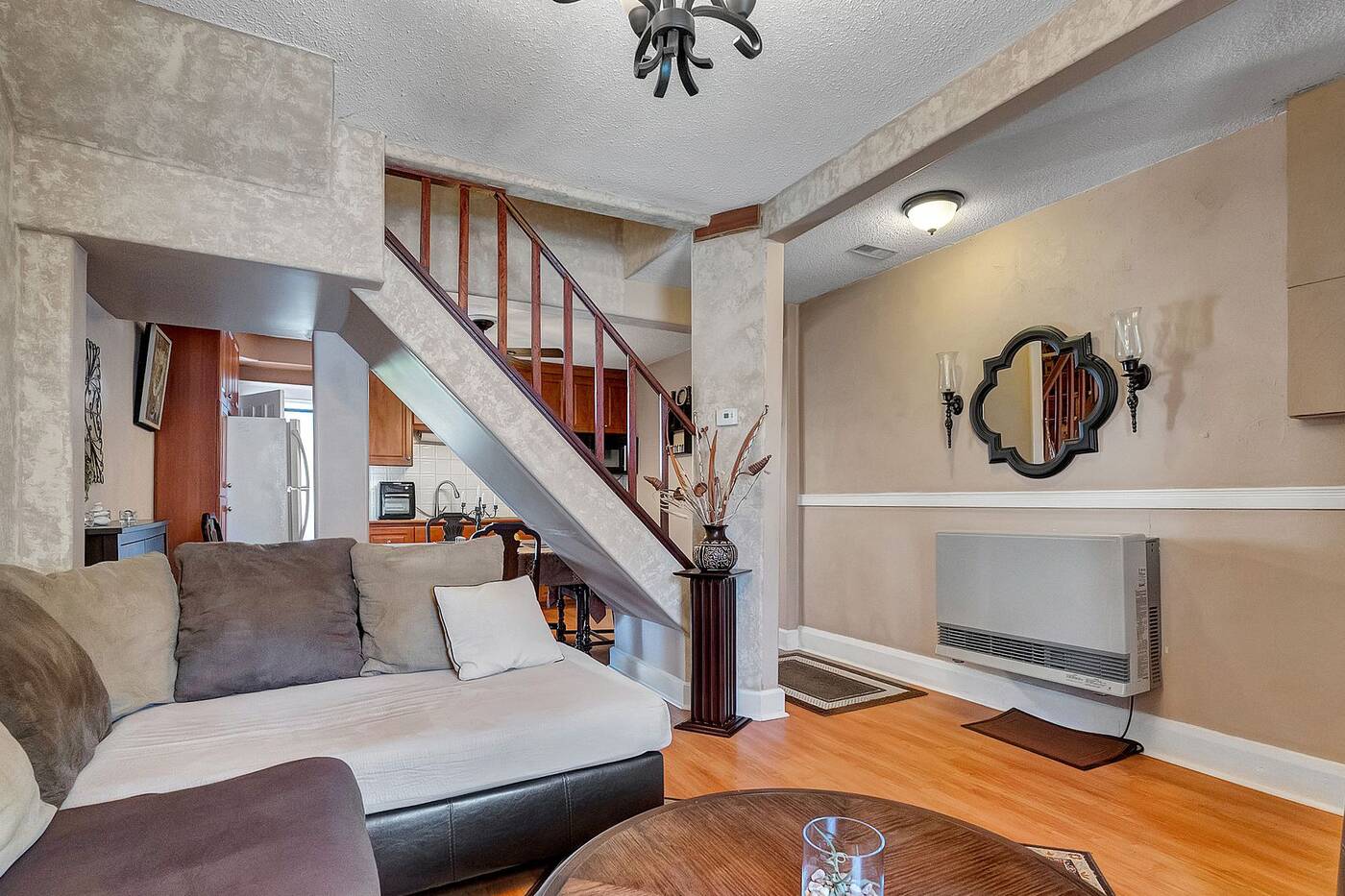

The main floor.
The layout is a bit awkward but the Dutch door off the kitchen is too cute.
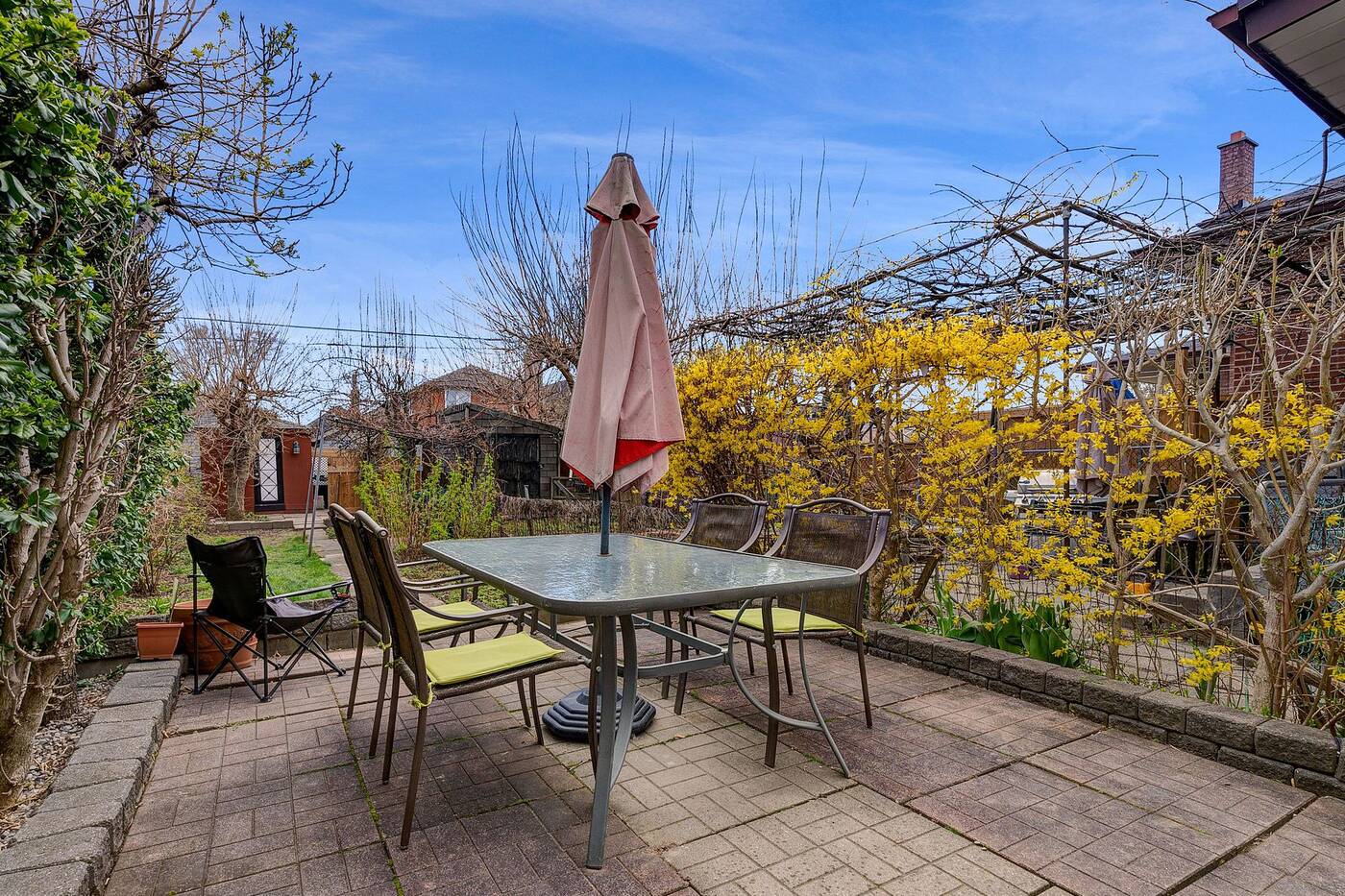

The back patio.
Off the kitchen is a laundry room/mud room that leads to the spacious backyard.
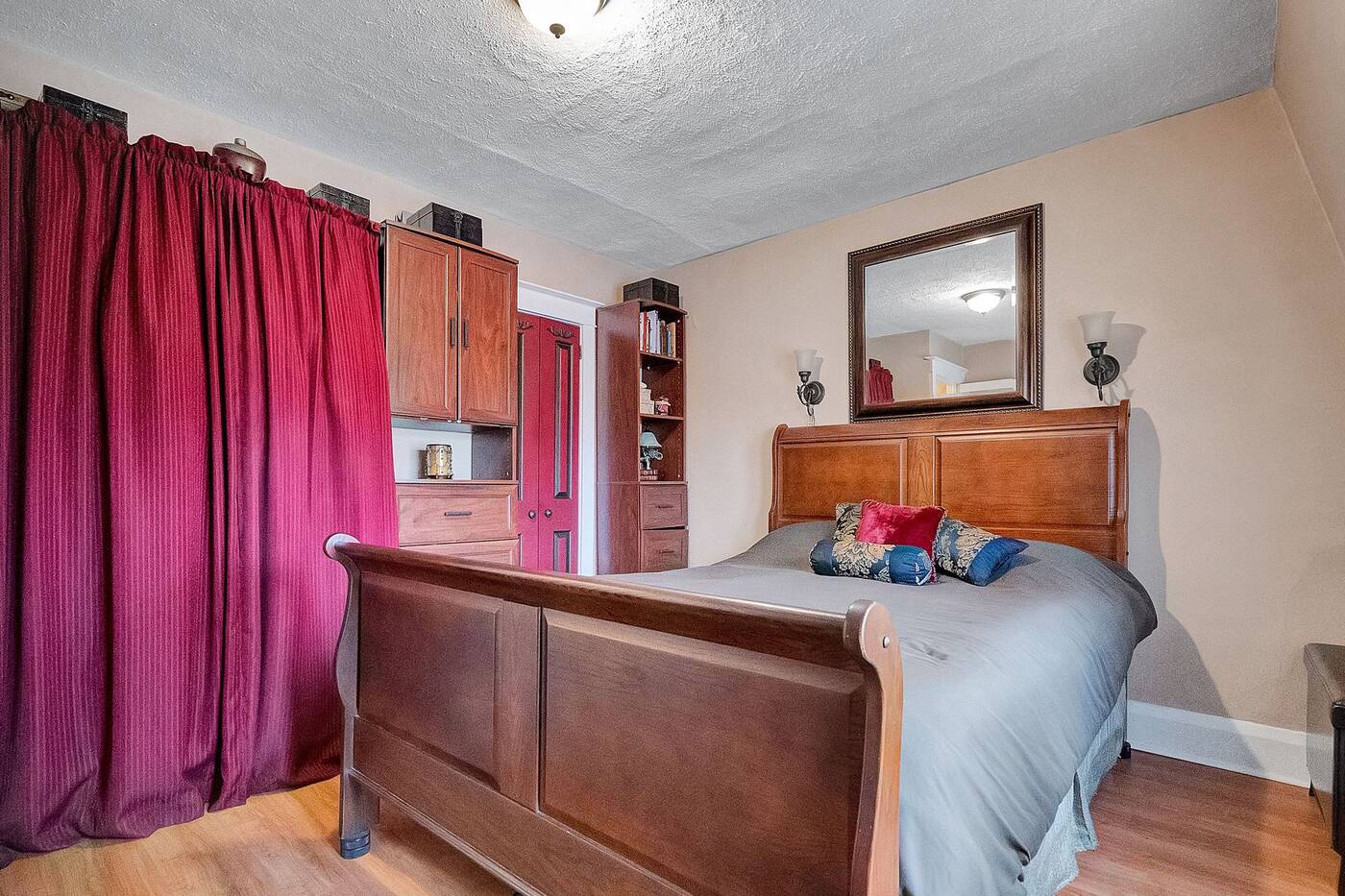

The primary bedroom.
Upstairs, there are two decently sized rooms and a small bathroom.
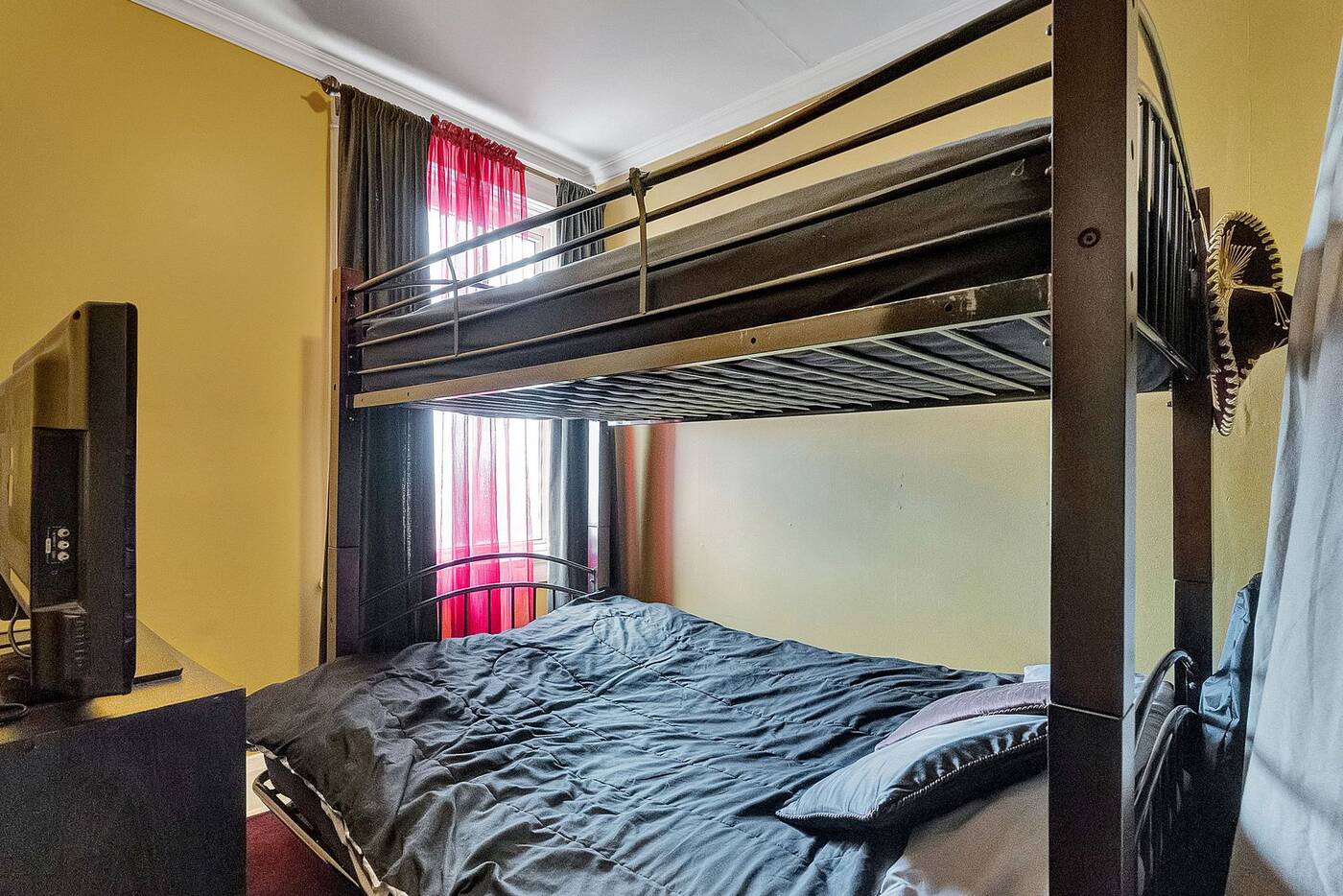

The second bedroom.
The house definitely needs some updating but the roof was done in 2015, the furnace is only a few years old, the electrical has been updated, and there’s room for expansion.
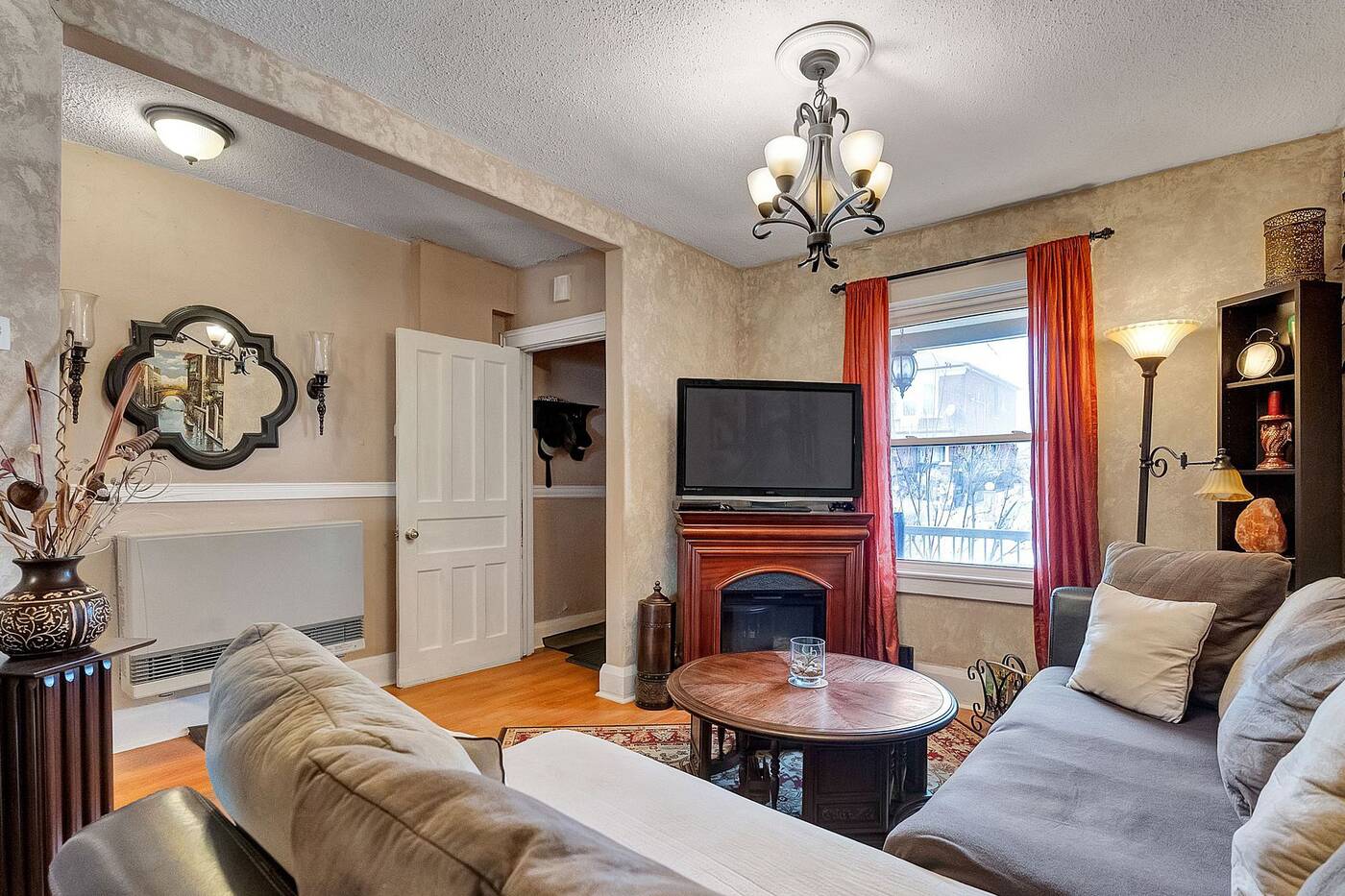

A fireplace in the living room.
Also, a coat of paint will do wonders to brighten up the all-beige ’90s aesthetic.
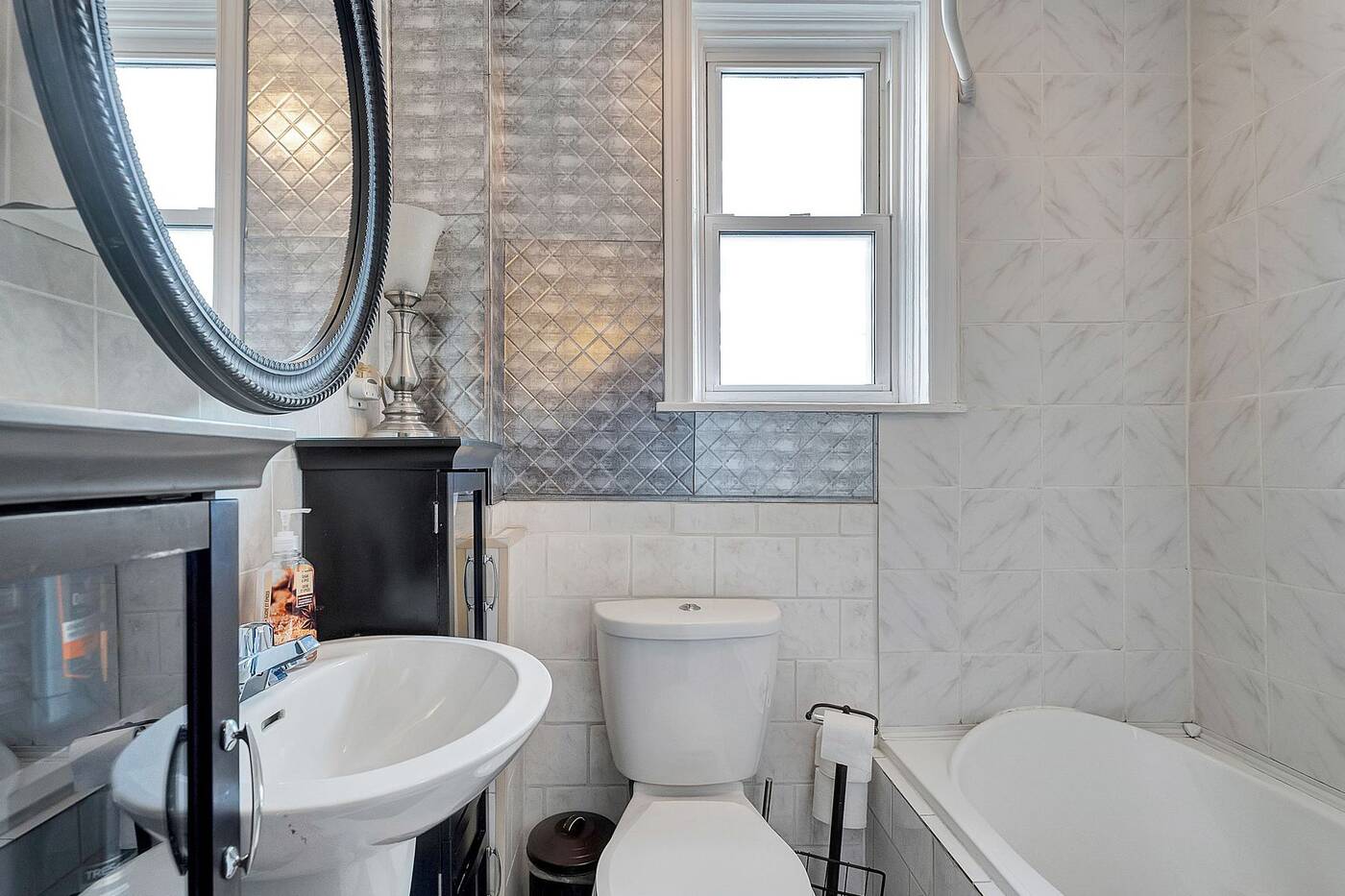

The small bathroom.
However, the biggest selling point of this home is the price point.
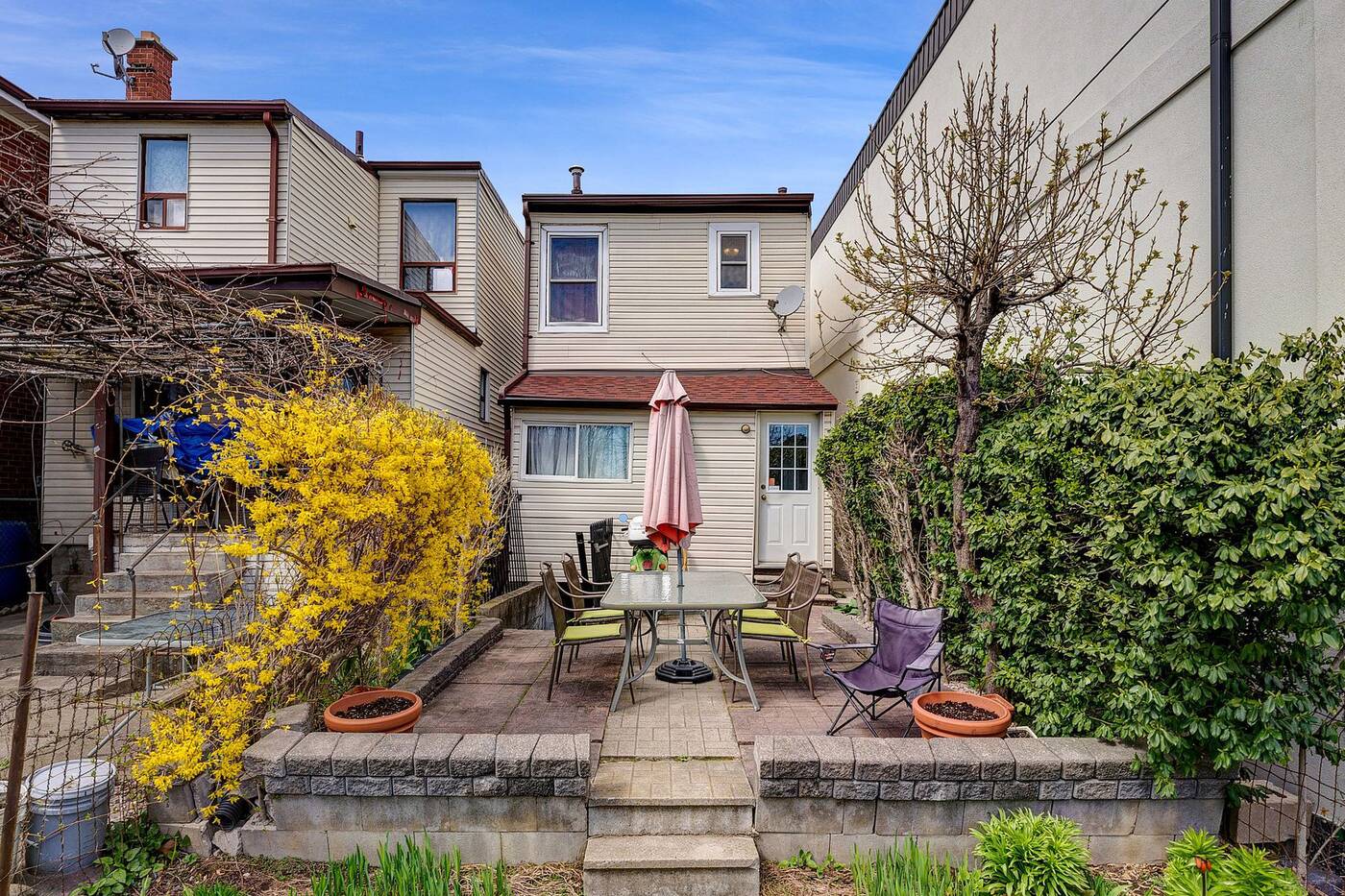

The back of the house.
39 Hatherley Rd. is listed for only $599,999, which is almost unheard of in Toronto, even if this place will probably go for closer to $700K.





-



 Health15 hours ago
Health15 hours agoRemnants of bird flu virus found in pasteurized milk, FDA says
-
Art21 hours ago
Mayor's youth advisory council seeks submissions for art gala – SooToday
-



 Health19 hours ago
Health19 hours agoBird flu virus found in grocery milk as officials say supply still safe
-



 Investment19 hours ago
Investment19 hours agoTaxes should not wag the tail of the investment dog, but that’s what Trudeau wants
-
News20 hours ago
Peel police chief met Sri Lankan officer a court says ‘participated’ in torture – Global News
-



 Science24 hours ago
Science24 hours agoiN PHOTOS: Nature lovers celebrate flora, fauna for Earth Day in Kamloops, Okanagan | iNFOnews | Thompson-Okanagan's News Source – iNFOnews
-
Art21 hours ago
An exhibition with a cause: Montreal's 'Art by the Water' celebrates 15 years – CityNews Montreal
-
Media15 hours ago
Vaughn Palmer: B.C. premier gives social media giants another chance




